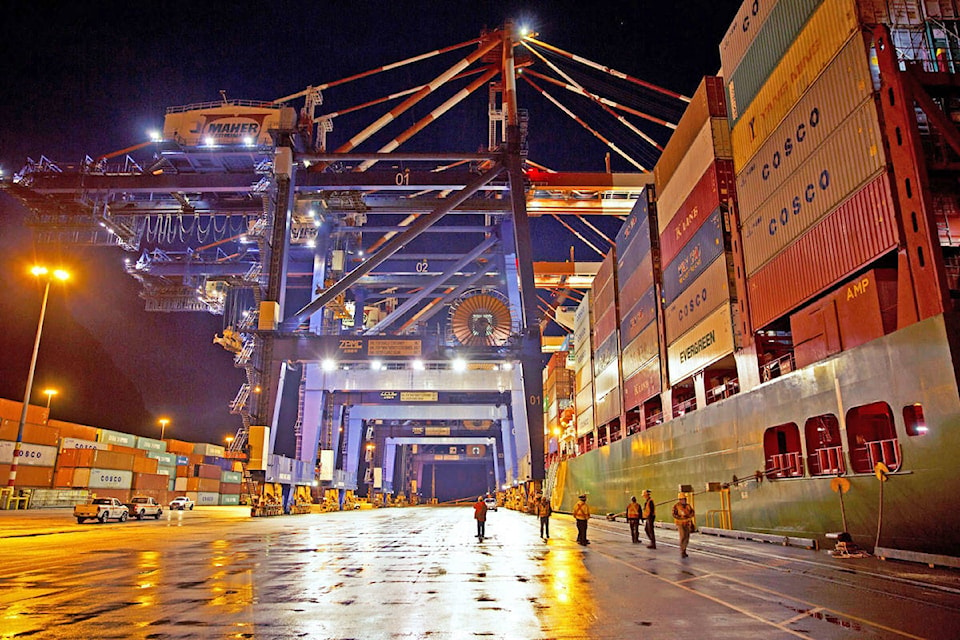Records were smashed last year at the Port of Prince Rupert.
Cargo moving through the northern B.C. port hit 24.1 million tonnes in 2017, the previous record was 23 million tonnes in 2013.
Part of the reason for the increase was the completion of Phase 2 at DP World’s Fairview Container Terminal. The expansion increased capacity by 60 per cent and the terminal was able to move 926,540 TEUs (twenty-foot equivalent units).
At the same time, Ray-Mont Logisitics launched its transloading operation, improving the export business by stuffing empty shipping containers with grains, pulses and cereal products from Canada and the Mid-West U.S.
READ MORE:
“The increasingly diversified nature of the gateway, combined with terminal expansion and the introduction of new logistics services, is paying dividends to Canadians,” said Bud Smith, chair of the Prince Rupert Port Authority.
“The Port of Prince Rupert remains well-positioned to accommodate growth of Canadian trade in the Asia-Pacific region, and we continue to advance expansion that will see us become Canada’s second largest port by volume in the next decade.” Currently the two top ports are in Vancouver and Montreal.
The Port of Montreal also saw a record year for its cargo traffic with nearly 38 million tonnes in 2017.
Total tonnage through the Rupert port was up 28 per cent from 2016. Fairview wasn’t the only contributor to the increased activity through the port. Ridley Terminals, the coal facility, was facing a downward trend in previous years, but in 2016 it saw a volume increase of 90 per cent with 7.6 million tonnes of coal shipped.
READ MORE:
Westview Terminal exported close to half of Canada’s pellet production, the port’s press release stated. The pellet terminal had a 22 per cent increase in biofuel volumes to 1.1 million tonnes. The port’s tourism industry also doubled in 2017 with Northland Cruise Terminal seeing 25 cruise ships and more than 16,000 tourists and staff.
The only decrease in 2017 was at the Prince Rupert Grain Terminal where there was a six per cent decrease due to lower volumes of wheat.
READ MORE:
“The strength of the port’s performance last year is a further validation of the Port of Prince Rupert’s strategic advantages and the effective collaboration of our partners who operate the terminals, trains, trucks and other trade-related businesses across the northern corridor,” said Joe Rektor, interim president and CEO of the Prince Rupert Port Authority.
shannon.lough@thenorthernview.com
Like us on and follow us on



